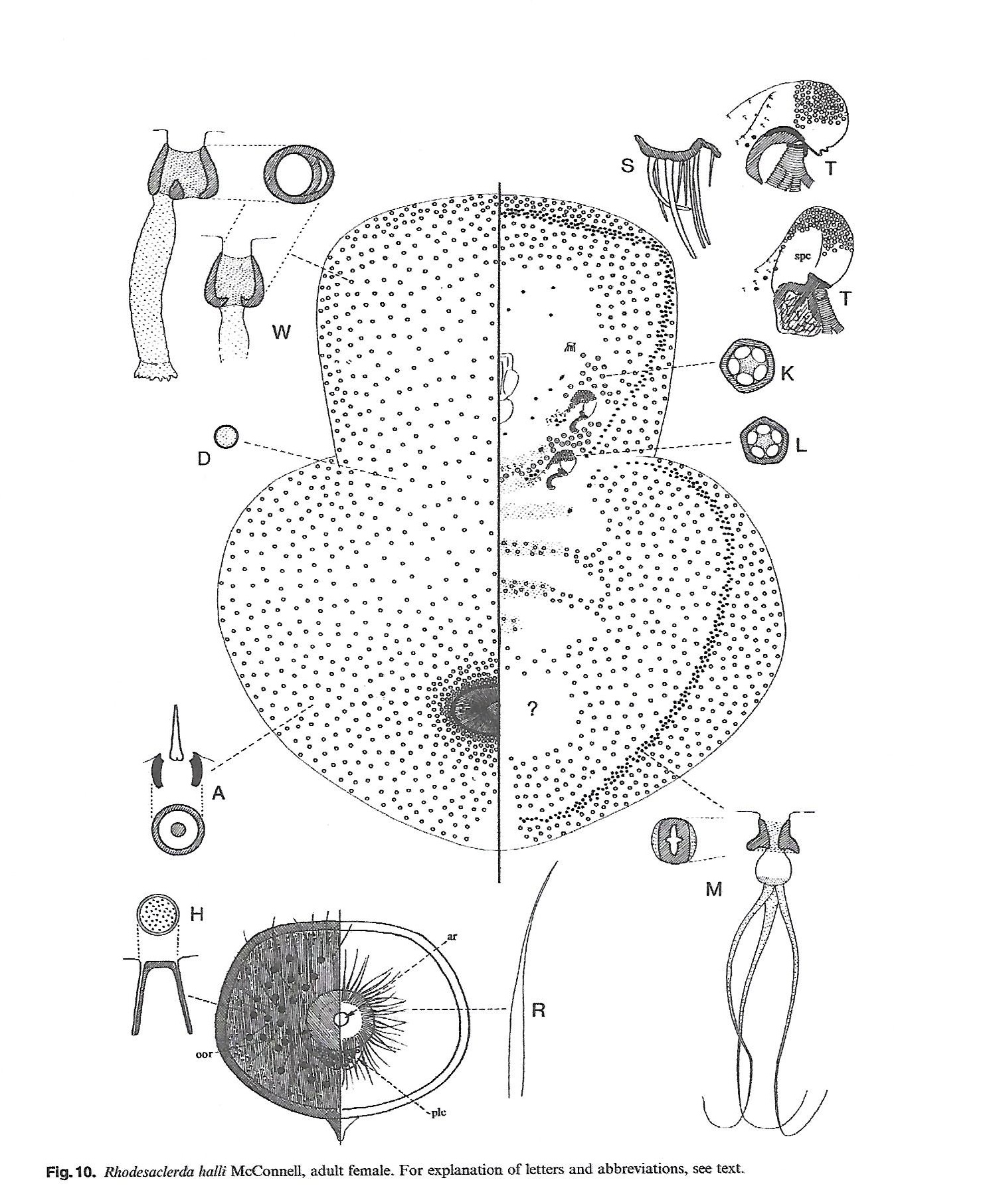Valid Names Results
Rhodesaclerda halli McConnell, 1954 (Aclerdidae: Rhodesaclerda)Nomenclatural History
- Rhodesaclerda halli McConnell 1954: 115. Type data: ZIMBABWE: Mazoe, on Combretum; collected W.J. Hall, 14.ix.1928.. Holotype, female, by original designation Type depository: London: The Natural History Museum, England, UK; accepted valid name Illustr.
Common Names
Ecological Associates
Hosts:
Families: 1 | Genera: 1
- Combretaceae
- Combretum | HodgsoMi2002IMa McConn1954
Geographic Distribution
Countries: 1
- Zimbabwe | HodgsoMi2002IMa McConn1954
Keys
- HodgsoMi2002IMa: pp.485 ( Adult (F) ) [Species of Rhodesaclerda.]
- McConn1954: pp.111 ( ) [World]
Remarks
- Systematics: Rhodesaclerda halli differs from the other two species of Rhodesaclerda in being much larger, with the anal cone apparently placed more anteriorly on the abdomen.. It also differs from the other two species (character states on other two species in brackets) in having inner ductule of ventral microducts divided into more than one ductule (generally only one ductule); heavily sclerotized bilocular pores extremely abundant around anal cone, so that pores actually touch (although more frequent than elsewhere on dorsum, bilocular pores not nearly touching); and very long anal ring setae that prtrude through outer orifice of anal cone (this is somewhat similar to Kwazulaclerda loranthi. It shares with R. insleyae the cone-shaped invaginated setae with a granulate surface on the anal cone. (Hodgson & Millar, 2002a)
- Structure: Enclosed in a thick, straw-colored, waxy test exposed on the surface of the stems of the host, the insect free from the test, which is composed of five indistinct plates, two lateral, one anterior, one posterior, and one dorsal, the test slightly longer than wide, with an opening in the posterior plate to shich the posterior end of the insect is closely applied (McConnell, 1954) Mounted female body large, strongly divided by a deep waist between spiracles; head about half width of abdomen; sclerotized anal cone appearig to lie medially on abdominal dorsum. (Hodgson & Millar, 2002a)
- General Remarks: Description and illustration of adult female by McConnell (1954) and by Hodgson & Millar (2002). Description and illustration of first instar nymph by Hodgson & Millar (2002). Colour photograph in Kawai (1980, Fig. 5.3).
Illustrations
Citations
- BenDov2006b: catalog, taxonomy, 23
- HodgsoMi2002IMa: description, distribution, host, illustration, key, taxonomy, 489-492
- McConn1954: description, distribution, host, illustration, taxonomy, 115



